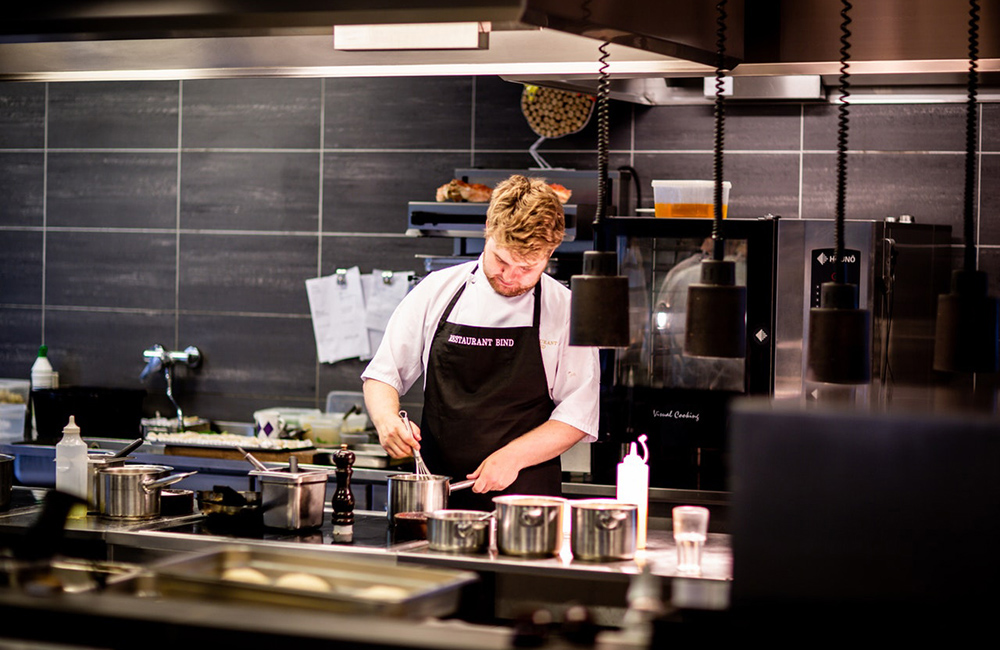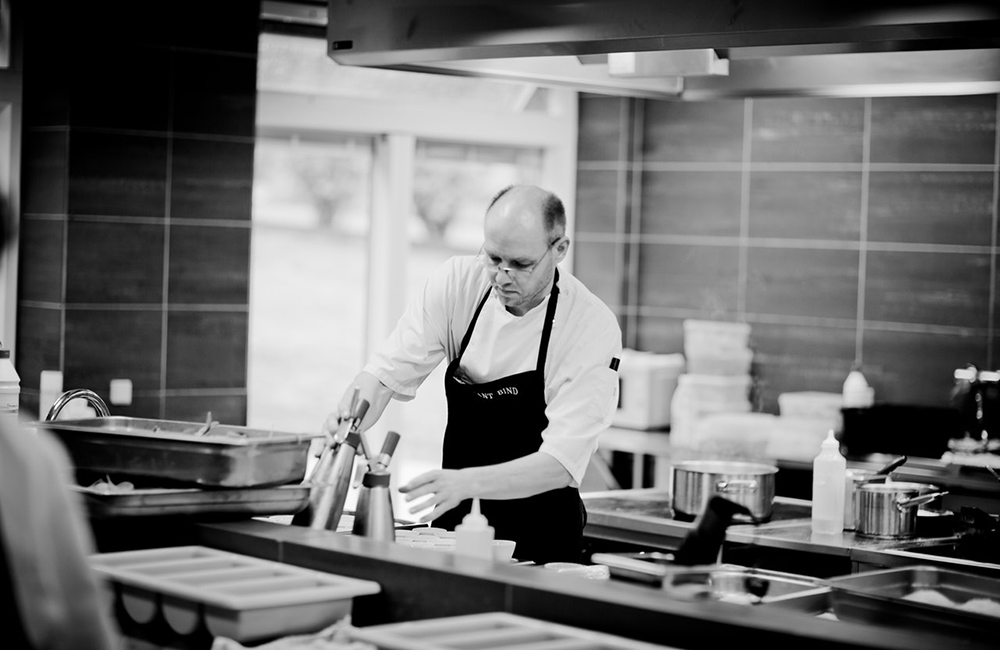An efficient restaurant kitchen is like a well-choreographed dance - everything flows smoothly and beautifully together. But just like with a professional dance performance, this level of efficiency doesn't just happen on its own. Restaurant operators must take the time to plan and optimize their kitchen stations to keep everything running like a well-oiled machine.
The trickiest part is figuring out how to arrange kitchen stations for optimal efficiency. Figuring out the best restaurant kitchen setup can be a challenge, but one of the best things you can do is create kitchen station diagrams.

How to Improve the Efficiency by Creating a Kitchen Station Diagram
Whether you're building a new restaurant or working with an existing kitchen, creating a kitchen station diagram can help you optimize your cooking stations for maximum efficiency.
Just as its name suggests, a kitchen station diagram is a drawing or sketch that illustrates the position of all equipment, utensils at each work station and the location of ingredients that need to be stored there for service.
Restaurant kitchen planning starts with figuring out which stations you'll need and where to place them.
When creating your diagrams, there are a few things that you need to take into consideration. To maximize efficiency, you should have a good idea which food items will be produced and in what quantities. You'll also need to consider the level of preparation that each food item will require at your restaurant kitchen workstations.

Use Your Menu to Choose Kitchen Stations
To create your diagram, you need to know which stations you'll need in your kitchen. To figure that out, you need to take a closer look at your menu.
Go through each menu item and identify exactly what you'll need to create each one. You can write down each step on paper, or you can create a more organized list in a spreadsheet.
Although time-consuming, this step will help you understand what it really takes to prepare each item on your menu. The goal is to create a list like this for every single item on your menu.
This list will help you break down each stage into different stations which can be used to prep or prepare your menu items.
For example, the kitchen in a restaurant may have:
- Cold prep
- Meat prep
- Fry/bake
- Grill
- Expo
Different tasks will be carried out at these restaurant workstations. At the meat prep station, for example, your staff may cut and marinate meat. At the cold prep station, they may slice vegetables and prepare marinades. The grill and fry stations will be used to cook various menu items.
There are a few advantages to using spreadsheets to outline your menu item preparation. One of the main advantages is that you can create a master list of all tasks that need to happen at each station. This information will help you better organize your layout, but it will also help you determine whether you're relying too heavily on a single station.
If most or all of your menu items are coming off of the same station, it can create bottlenecks that slow the kitchen staff down. Knowing this ahead of time will allow you to plan your kitchen differently to avoid creating a bottleneck.
Knowing what it takes to create each menu item will help make it easier to figure out which stations you'll need in your kitchen.
Estimate Volumes
Now that you have a good understanding of what it takes to create each menu item, it's time to estimate station volumes during service.
If your restaurant is already up and running and you have a pretty static menu, it should be easy to estimate volumes using your POS system data. Your POS data should give you information on which menu items people are ordering and how often. Using this data, you can estimate how much volume each of your stations would receive.
If you're still in the planning stages and are building a restaurant kitchen, this step can be a little tricky. You can "guesstimate" your volumes, but these figures will likely be adjusted once the operation gets up and running. Do some research on your competition and neighborhood to get a better sense of what customers in your area find appealing.
If you know which menu items customers are more likely to order, you can estimate which stations will produce higher volumes and which menu items will be more popular. While your research will give you a good estimate, be ready to make changes once you open your doors and start welcoming in customers.
Place Appropriate Elements Near Each Station
At this stage, you have a good understanding of the stations you'll need and how much volume they'll produce. To maximize efficiency, you'll need to consider which elements should be placed near each station to move things along.
Consider which items should be placed above, below, left and right of the station. If plating is done at a station, you may store plates above the station. Consider which items can be readily located underneath the counter, such as refrigeration or other supplies.
With all of this information in hand - stations, volumes and supplies - you can begin creating your kitchen station diagrams.

Test Your Diagram
Now that you've created a plan, it's time to take that plan for a test drive. It may be tempting to skip this step, but it's important to make sure that your plan will work as intended before you start investing in equipment and placing items in different places.
A good way to test things out is to place tables where you plan to place each station. Print out your diagrams and place those diagrams on each relative table. Choose some sample menu items, and start moving through the stages. Make note of excessive travel distances, bottlenecks, cross traffic, long reaches and other steps you may have overlooked. By putting your diagrams to the test, you can make adjustments to maximize your efficiency.
If your restaurant is already up and running, you may want to run your station diagrams past your employees and get some feedback from them. Employees may point out some things you may have missed or not considered.
Once you've found a layout that will work, you can post diagrams near stations to help employees prepare their stations before each shift.
If you're running an existing restaurant, it's important to make sure that you train your employees on the new setup. The posted diagrams and training will ensure that your employees know what's expected of them and how to improve their efficiency at each station.
Maximizing restaurant kitchen efficiency is no easy task, and it will take you some time to find the right solution. Planning and optimizing the kitchen stations in a restaurant is one of the best ways to ensure that everything is running smoothly. Diagrams will get you started, but make sure that you're testing and readjusting your plans every so often and especially when introducing new menu items. Also, listen to feedback from employees. Your employees will be the ones putting your plans into action, so if they find inefficiencies or bottlenecks, their feedback will help make your kitchen and their jobs more efficient.


